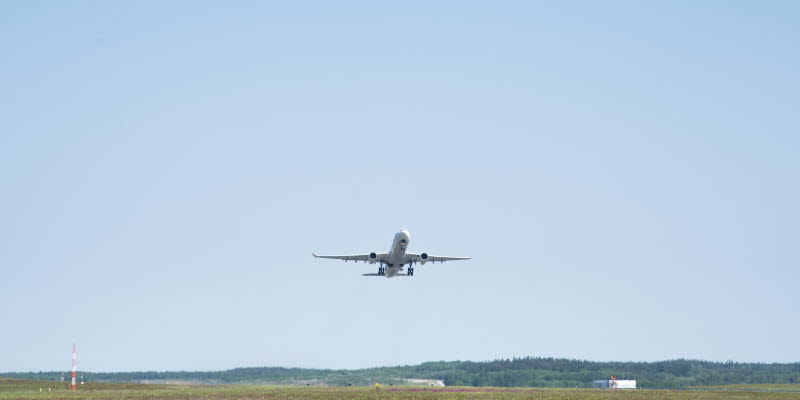Swedavia’s six-month report 2019: Stable results – investments in access and measures to combat climate change
Swedavia’s first half of 2019 was dominated by new investments in the transformation of the aviation industry and its own operations in the face of climate change. For example, Swedavia promotes the use of renewable jet fuel, which sharply reduces fossil carbon dioxide emissions. Swedavia also has the target for all ten of its airports of zero fossil emissions in their own operations by 2020. Three of Swedavia’s airports have already achieved this target.

Swedavia’s first half of 2019 was dominated by new investments in the transformation of the aviation industry and its own operations in the face of climate change. For example, Swedavia promotes the use of renewable jet fuel, which sharply reduces fossil carbon dioxide emissions. Swedavia also has the target for all ten of its airports of zero fossil emissions in their own operations by 2020. Three of Swedavia’s airports have already achieved this target.
“There is no doubt that air travel needs to be transformed and become sustainable. Meanwhile, it is equally obvious that air travel will be an important transport mode in the future,” says Jonas Abrahamsson, Swedavia’s president and CEO.
At the same time, the pace of investment in Swedavia’s development programmes has remained high. These investments are aimed at developing the airports in order for them to meet capacity needs today and in the future. A total of more than 17 billion kronor will be invested in Stockholm Arlanda Airport’s development through 2025 in the programme launched there in 2014. This includes a new pier, marketplace and security checkpoint at Stockholm Arlanda Airport and the integration of Terminals 4 and 5.
“Our task is to safeguard and develop the access Sweden needs in a sustainable way. But growth and competitiveness are also important in order to successfully tackle the challenge of climate change in the long term,” says Jonas Abrahamsson.
The number of passengers at Swedavia’s ten airports totalled 19.6 million in the period January-June, which is a 4 per cent decrease compared to the same period lastyear. This trend is explained primarily by a decrease in domestic air travel but comes after numerous years of very good growth in air travel.
For the six-month period, Swedavia reported net revenue of 3.1 billion kronor (2.9) and operating profit of 348 million kronor (331). Higher airport charges as a result of investments to increase capacity had a positive effect on results, while higher depreciation and amortisation as well as non-recurring costs as a result of Swedavia’s cost reduction and change programme had a negative effect.
“The change to process-oriented operations in order to ensure improved efficiency, a way of working that has even more focus on the customer, and increased cost-effectiveness in both the short and long term is proceeding as planned,” notes Jonas Abrahamsson.
Swedavia is now continuing its investments in sustainable air travel and innovation. During the autumn, Swedavia will begin work to analyse the effect of electric air travel on airport operations. Swedavia also participates in the consortium ELISE, whose mission is to develop electric air transport in Sweden.
“In the short term, renewable jet fuel is the key to transforming aviation in the face of climate change, but in the longer term electrification will also be very important. A big breakthrough for electric aviation will have a major impact on us as an airport operator, so we will be active from the very start on issues concerning electric aviation and airport infrastructure,” says Jonas Abrahamsson.
The full interim report is available here.